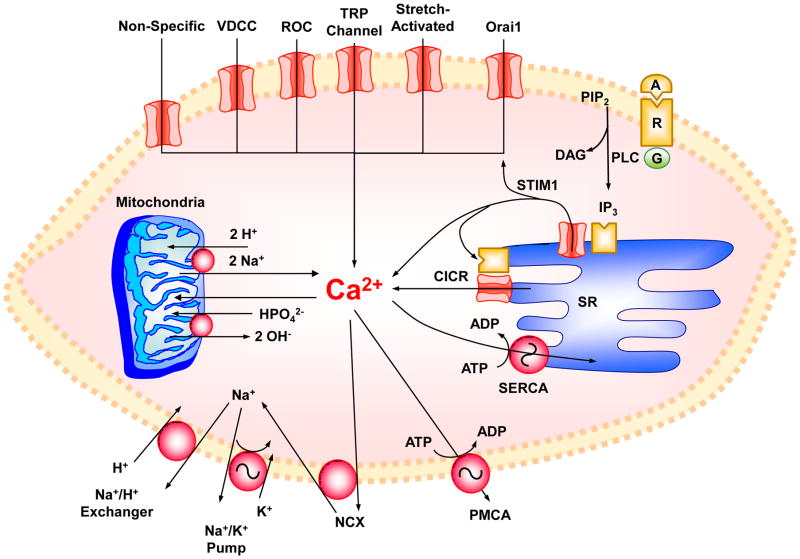Fig. 2.
Ca2+ mobilization and Ca2+ removal mechanisms in VSM. Agonist (A)-receptor (R) interaction causes Ca2+ release from sarcoplasmic reticulum (SR) in response to 1,4,5-inositol trisphosphate (IP3) and to Ca2+ via Ca2+-induced Ca2+ release (CICR). VSMC activation also stimulates Ca2+ influx through nonspecific Ca2+ leak, voltage-dependent Ca2+ channels (VDCC), receptor-operated channels (ROC), transient receptor potential (TRP) channels, and stretch-activated channels. Depletion of intracellular Ca2+ stores in SR causes the release of stromal interaction molecule (STIM1) which in turn stimulates Orai1 store-operated Ca2+ channels. The increased intracellular Ca2+ is taken up by SR Ca2+-ATPase (SERCA) or extruded by the plasmalemmal Ca2+-ATPase (PMCA) or Na+-Ca2+ exchanger (NCX), and the resulting excess Na+ is extruded via Na+/K+ pump and Na+/H+ exchanger. At very high and pathological increases in intracellular Ca2+, the mitochondria play a role in Ca2+ uptake and homeostasis. When Ca2+ is taken up by mitochondria, HPO42− is also taken up via HPO42−:2OH− exchange and calcium phosphate is formed. Under favorable conditions and when Ca2+ can be handled by SERCA, PMCA and NCX, mitochondrial Ca2+ is slowly released via a Ca2+ efflux pathway involving a Ca2+:2H+ or Ca2+:2Na+ antiporter. PIP2, phosphatidylinositol 4,5-bisphosphate; PLC, phospholipase C; DAG, diacyglycerol

